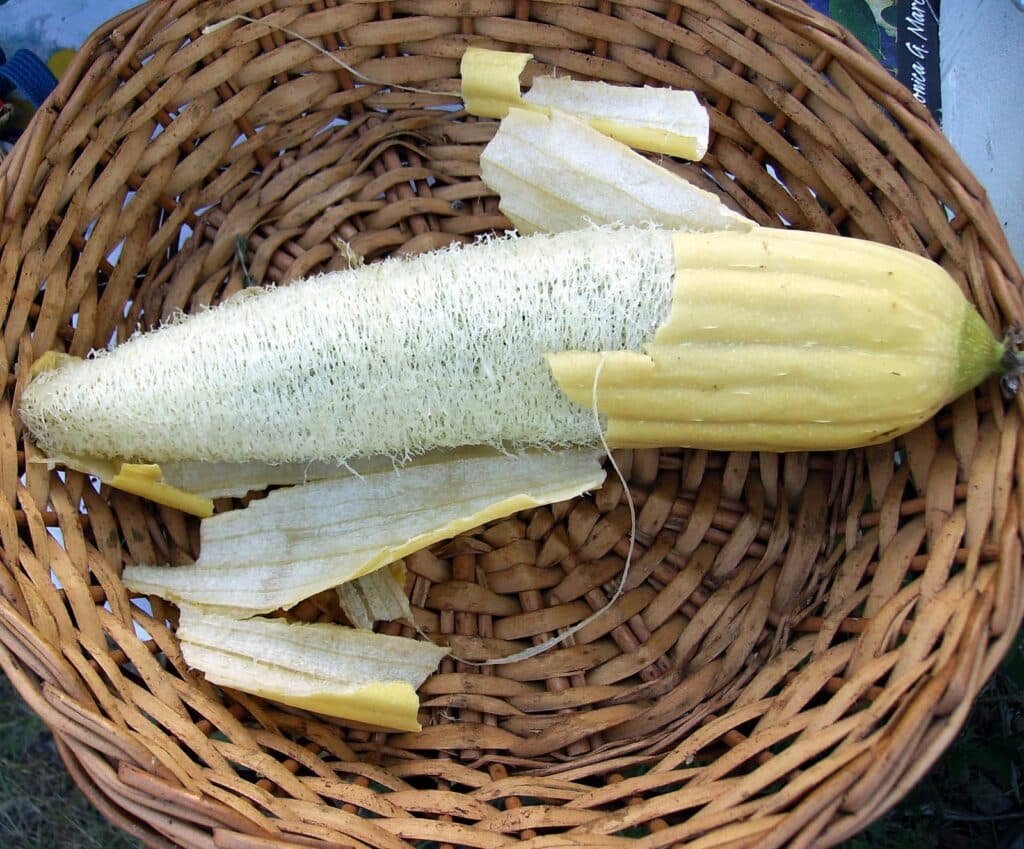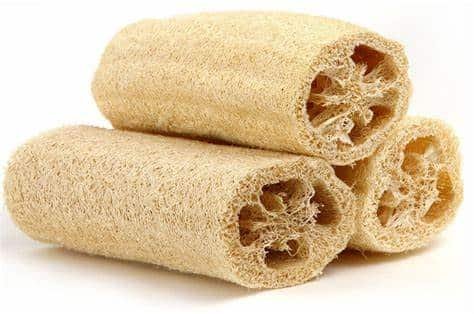If you want to grow something useful and fun in your garden, you should try loofah gourds. Sometimes people spell them as luffa or loofah, but they are the same kind of plant. You can make natural sponges from loofah gourds. These sponges are good for different things, like washing yourself, scrubbing your dishes, or making crafts. n this article, this article tells you how to grow loofah gourds and care for them. Loofah gourds can make sponges that are good for many things. You can also use them to wash, to clean, or to make things. We will teach you how to use loofah gourds for these things.
Check out How to Grow and Care for African Milk Tree
What are Loofah Gourds?

Loofah gourds are tropical or subtropical vines that belong to the cucumber family (Cucurbitaceae). They have large yellow flowers that attract bees and butterflies, and produce long cylindrical fruits that can grow up to 2 feet long. There are two main species of loofah gourds: Luffa aegyptiaca, also known as smooth loofah or sponge gourd, and Luffa acutangula, also known as angled loofah or ridged gourd.
How to Grow Loofah Gourds
Loofah gourds are easy to grow from seeds, but they require a long and warm growing season of at least 150 to 200 days. Therefore, they are best suited for zones 7 to 13, or you can start them indoors 6 to 8 weeks before the last frost date and transplant them outside after the danger of frost has passed.
Soil and Sunlight
Loofah gourds prefer well-drained soil with a pH range of 6.0 to 6.5. You can add organic matter to the soil before planting, and fertilize with nitrogen-rich fertilizer two to three times during the growing season. Loofah gourds need at least 6 hours of full sun per day, and more is better.
Spacing and Trellising
Loofah gourds are vigorous climbers that can reach up to 30 feet in length. Therefore, they need plenty of space and support to grow. You can plant them 12 to 18 inches apart in rows 6 to 10 feet apart, or in hills 4 to 6 feet apart. You can also grow them in large containers with drainage holes, but make sure to water them regularly and provide a sturdy trellis or stake for them to climb on.
Loofah gourds benefit from trellising, as it allows better air circulation, prevents rotting and discoloration, and makes harvesting easier. You can use any type of trellis, such as a fence, a pergola, a teepee, or a wire mesh, as long as it can support the weight of the vines and fruits. You can also train the vines to grow horizontally or vertically, depending on your preference and space availability.
Watering and Weeding
Loofah gourds need regular watering, especially during dry spells. They need about 1 inch of water per week, and more during hot weather. You can use a soaker hose or a drip irrigation system to water the base of the plants, and avoid wetting the leaves and fruits, as this can spread diseases. You can also mulch the soil around the plants to conserve moisture and suppress weeds.
Loofah gourds are relatively pest and disease resistant, but they can be affected by some common problems, such as powdery mildew, aphids, spider mites, squash bugs, and cucumber beetles. You can prevent or treat these issues by using organic methods, such as pruning, spraying with neem oil or insecticidal soap, or applying diatomaceous earth or kaolin clay.
How to Harvest Loofah Gourds

Loofah gourds can be harvested at different stages of maturity, depending on how you want to use them. If you want to eat them as a vegetable, you should pick them when they are young and tender, about 6 to 12 inches long and still green. You can use them like zucchini or cucumber, and cook them in soups, stir-fries, salads, or pickles. You can also eat the flowers, which are edible and have a mild flavor.
If you want to use them as sponges, you should let them mature and dry on the vine until they turn brown and lightweight, and you can hear the seeds rattling inside. This can take up to 200 days, depending on the climate and variety. You should harvest them before the first frost, or bring them indoors if the weather turns cold.
Check out Attracting Bats to Your Bat House: FAQs Answered
How to Process Loofah Gourds into Sponges

Once you have harvested the mature loofah gourds, you need to peel and clean them to reveal the fibrous skeleton that makes the sponge. Here are the steps to follow:
- Cut off the stem and the blossom end of the gourd, and shake out the seeds. You can save the seeds for planting next year, or use them for crafts or bird feed.
- Peel off the skin of the gourd, either by hand or by using a knife. You can also soak the gourd in water for a few days to make the peeling easier.
- Rinse the sponge under running water to remove any dirt, pulp, or debris. You can also use a brush or a hose to scrub it gently.
- Soak the sponge in a bucket of water with bleach or vinegar for a few hours to disinfect and whiten it. You can also add some baking soda or lemon juice to remove any odor.
- Rinse the sponge again and squeeze out the excess water. Hang it to dry in a sunny and airy place.
- Cut the sponge into smaller pieces, if desired, and store them in a dry and cool place until ready to use.
How to Use Loofah Gourds for Various Purposes
Loofah gourds are versatile and eco-friendly, and can be used for many purposes. Here are some of the ways you can use them:
- As a bath or shower sponge: You can use a loofah sponge to exfoliate and massage your skin, and improve blood circulation. You can also add some soap or body wash to create a lather. You should rinse and dry the sponge after each use, and replace it every few weeks or months, depending on how often you use it.
- As a kitchen or cleaning sponge: You can use a loofah sponge to scrub dishes, pots, pans, countertops, or sinks. You can also add some dish soap or vinegar to help with the cleaning. You should rinse and dry the sponge after each use, and sanitize it regularly by boiling it in water or microwaving it for a few seconds.
- As a craft or gardening material: You can use a loofah sponge to make various crafts, such as ornaments, wreaths, dolls, or baskets. You can also use it as a potting medium, a seed starter, or a compost material. You can also dye it with natural or synthetic colors to create different effects.
Loofah gourds are a great plant that can give you food, sponges, and fun. You can grow and pick your own loofah gourds and use them for many things. They are also good for the earth. You can grow loofah gourds in your garden area and make things with them.
Pingback: Cucumber Types List with Pictures & Tips -